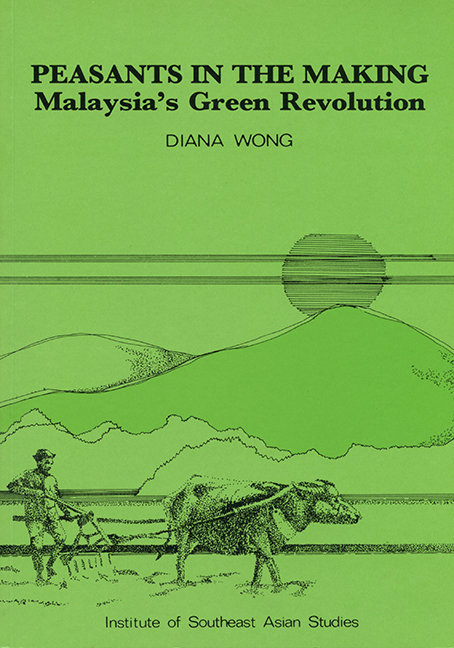Book contents
- Frontmatter
- Contents
- Acknowledgements
- Part I The Framing of the Study
- Part II The Anatomy of the Village
- Part III The Transformation of the Village Economy
- Chapter 7 The Production Cycle and the Division of Labour
- Chapter 8 Landownership and Land Tenure
- Chapter 9 Rural Indebtedness and the Marketing of Padi
- Chapter 10 Patterns of Change in the Non-Padi Economy
- Part IV The Transformation of Village Society: The Unfolding of Social Differentiation
- Part V Conclusion
- Appendix I Research Methodology
- Appendix II Questionnaire
- Bibliography
- THE AUTHOR
Chapter 9 - Rural Indebtedness and the Marketing of Padi
from Part III - The Transformation of the Village Economy
Published online by Cambridge University Press: 21 October 2015
- Frontmatter
- Contents
- Acknowledgements
- Part I The Framing of the Study
- Part II The Anatomy of the Village
- Part III The Transformation of the Village Economy
- Chapter 7 The Production Cycle and the Division of Labour
- Chapter 8 Landownership and Land Tenure
- Chapter 9 Rural Indebtedness and the Marketing of Padi
- Chapter 10 Patterns of Change in the Non-Padi Economy
- Part IV The Transformation of Village Society: The Unfolding of Social Differentiation
- Part V Conclusion
- Appendix I Research Methodology
- Appendix II Questionnaire
- Bibliography
- THE AUTHOR
Summary
INTRODUCTION
Quite in contrast to the view that “in a traditional Malay rice-producing village the role of capital and credit in the agricultural economy is very limited”, the close relationship between indebtedness and marketing was already established in the early stage of commercialization of the padi economy. As noted by Sharom Ahmat, the farming out of tax revenues by the Kedah sultanate to Chinese revenue farmers at the turn of the century was the first step in this direction.
One way in which the Chinese revenue farmers ensured that a large and regular supply of padi was available for the export market, was to get Malay peasants into debt … What normally happened of course, was that the rakyat was unable to honour the loan on time, and this meant that he had either to hand over a more than proportionate share of the harvest or lose the land.
By the mid-fifties, four-fifths of all the padi farmers in the Kedah region were reported to have handed over part of their crop to the buyer, who had provided them with credit under the padi kunca arrangement. The padi buyer was usually the village shopkeeper or a shopkeeper in the nearest town, from whom groceries and other consumer items were also obtained on credit. Each shopkeeper would be associated with a miller, from whom he acquired credit to finance the padi kunca deals and similarly, each mill would be financed by one of the large Chinese banks. Thomson mentioned that in one year, one bank alone lent out more than $12 million to mills in the Kedah area. Thomson also estimated that through the system of padi kunca, farmers lost out on half the value of the crop. The pervasive and pernicious character of rural indebtedness, with its interlocking into the marketing system, has become almost legendary.
What were however the characteristics of the peasant economy which made this an endemic feature of peasant life?
- Type
- Chapter
- Information
- Peasants in the MakingMalaysia's Green Revolution, pp. 145 - 159Publisher: ISEAS–Yusof Ishak InstitutePrint publication year: 1987

